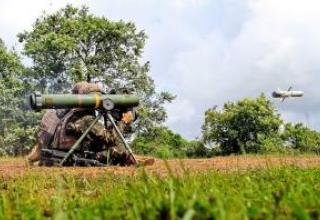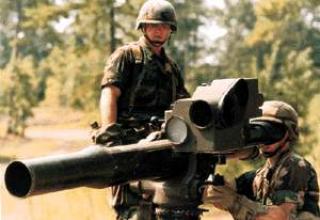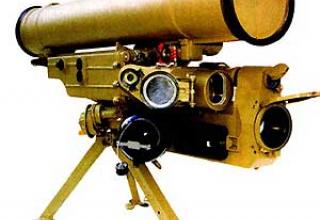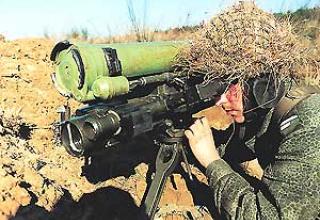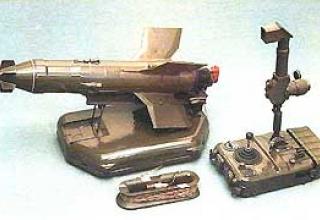Just a few years ago, Spain did not have the technical base needed to build anti-tank missile systems that meet modern requirements. However, the adoption and operation of an air-to-surface missile of the Aspide class by Selenia (Italy) and ZUR Roland of the Euromissile association (Germany, France) and its manufacture under licence by Santa Barbara (Spain) contributed to the establishment of a scientific and technological base that made it possible to start national development of PTSD.
- the starter engine nozzle;
- laser beam receiver;
- low thrust starter motor;
- tail fins;
- gyroscope;
- battery power;
- detonator;
- cumulative charge;
- cladding of cumulative excavation;
- traction vector control device;
- -
- of the marching engine accelerator fuel;
- marching engine fuel;
- a two-layer ogival head end that actuates the fuse.
A group of Santa Barbara specialists has been working for about five years to create a third-generation medium-range Toledo PTWC (Fig.1). These works are at the stage of refining the design and schematic solution, development, manufacturing and testing of individual blocks of the complex, which will include an EP, beam guidance system, sight and missile.
Composition:
It is planned to equip the rocket with a cumulative BC, a launch engine (Fig. 2), a solid propellant two-stage marching engine (Fig. 3), a laser beam receiver, tail fins, creating the rotation of the rocket relatively longitudinal axis. The launch engine will create an initial velocity of about 20 m/s for the rocket to provide the possibility of its application from limited spaces.
The missile's flight will be controlled by changing the direction of the engine thrust vector. The most difficult problems for the firm include the development and production of a cumulative BC, which is to be equipped with octolite.

- the combustion chamber plug;
- basic thermal insulation;
- retaining grate;
- inhibitor;
- thermo-isolation jacket;
- enclosure;
- solid fuel with inhibitor to reduce burning speed (from the ends);
- basic thermal insulation;
- swivel nozzle;
- rubber seal;
- skirt.
The development of the Toledo complex is based mainly on the technology of the Spanish military industry, but the use of foreign achievements is not excluded to solve some problems.

- electromagnet;
- a traction vector control device;
- nozzle;
- marshal engine fuel;
- armour coating inhibitor;
- marching engine fuel;
- shock-absorbing ring;
- combustion chamber blank;
- a channel for a cumulative charge jet of BC;
- cylindrical body;
- thermal insulation;
- support of electromagnets for traction vector control.
Characteristics:
| Method of warfare | Direct-fire |
| Range of effective missile application, m | 200-2000 |
| PU weight, kg | 20 |
| Mass of the rocket, kg | 15 |
| Armor permeability BC | over five calibers |
| The length of the rocket, mm | 927 |
| Wingspan,mm | 345 |
| Rocket diameter, mm | 115 |
Testing:
Testing of the complex began on April 21, 1995 at White Sands Range and continued with varying success until 1999. Only the ninth launch, on March 29, 1999, demonstrated the performance of the complex as a whole. During this flight, despite the failure of the interceptor's spatial orientation system for 23 seconds of flight and the termination of telemetry data reception for 58 seconds, the interceptor passed in close proximity to the Hera target missile.
During the tenth test launch on June 10, 1999, for the first time, a target simulating a SKAD missile was successfully intercepted and the technical feasibility of such an intercept was confirmed.
On 2 August 1999, during the eleventh test, a target simulating a detachable SCAD-type ballistic missile head in the upper atmosphere was intercepted.
Sources:
- Техника и вооружение сухопутных войск капиталистических государств" ,1986 год, выпуск 15(63)

